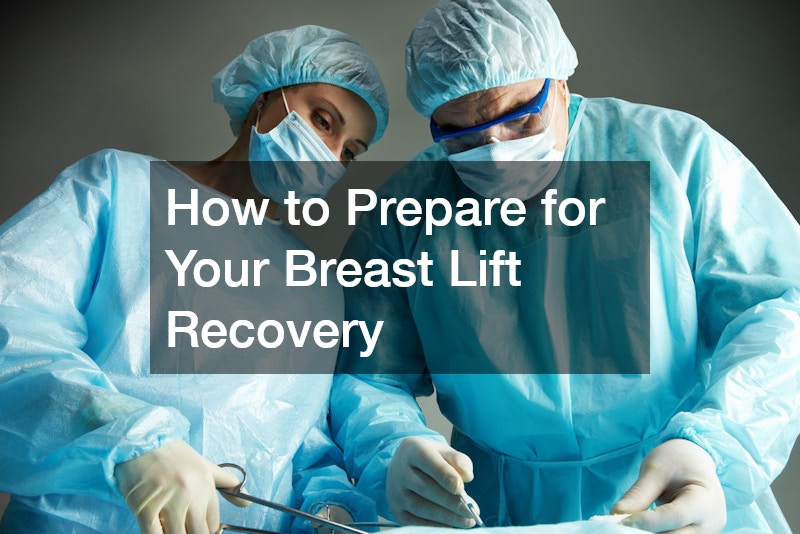Disclaimer: Life Cover Guide. This site provides family & home content for informational purposes only.
A breast lift is a transformative procedure that enhances breast shape and position, providing a boost in confidence and physical comfort. To achieve the best results, proper preparation and care during recovery are crucial.
This guide will walk you through key steps to ensure a smooth and successful healing process.
Before Your Breast Lift: Preparing for Recovery
Arrange for Assistance
Recovery can be challenging without help, especially during the initial days. Arrange for a trusted friend or family member to assist you with daily activities, meal preparation, and transportation to follow-up appointments.
Create a Recovery Space
Prepare a dedicated recovery area in your home. This space should include comfortable seating or a bed with plenty of pillows to support an elevated position. Keep essentials like water, medications, snacks, books, or a tablet within arm’s reach.
Gather Supplies in Advance
Before your surgery, stock up on recommended supplies. These may include pain medications, compression garments, loose clothing, gauze, and any other items your surgeon suggests. Being prepared helps you avoid unnecessary trips during your recovery.
Follow Pre-Surgery Instructions
Your surgeon will provide specific instructions, such as avoiding blood-thinning medications, ceasing smoking, and abstaining from alcohol. These steps reduce risks during surgery and promote quicker healing.
The First 48 Hours: Managing Immediate Recovery
Rest and Hydrate
Rest is essential for healing. Keep your upper body slightly elevated while reclining to minimize swelling and improve circulation. Drink plenty of water to support overall recovery and hydration.
Adhere to Post-Surgery Care
Carefully follow your surgeon’s instructions regarding medications, bandage care, and activity restrictions. Take prescribed pain relievers as directed and attend any scheduled follow-up appointments.
Reduce Swelling and Discomfort
Some swelling and soreness are normal after a breast lift. Applying cold compresses, as recommended, can help alleviate these symptoms. Avoid overdoing it, as excessive cold can damage tissues.
The First Week: Building a Recovery Routine
Wear Supportive Garments
Your post-surgery bra or compression garment is vital for proper healing. It reduces swelling and supports the new breast shape, promoting optimal results.
Avoid Physical Strain
Refrain from heavy lifting, strenuous exercise, or activities that involve raising your arms above your head. These actions can stress the healing tissues and delay recovery.
Maintain Proper Nutrition
Focus on a nutrient-rich diet to promote tissue repair and reduce inflammation. Include lean proteins, fresh vegetables, fruits, and whole grains to provide your body with the energy it needs.
Monitor Your Healing
Watch for signs of complications, such as increased redness, swelling, or discharge around incision sites. Contact your surgeon immediately if you notice unusual symptoms.
Weeks Two to Six: Gradual Recovery
Slowly Reintroduce Activities
Around the two-week mark, you may begin light activities with your surgeon’s approval. However, avoid high-impact exercises or any movements that strain your chest until you’re cleared to do so.
Protect Incision Sites
To minimize scarring, shield your incision areas from sun exposure. Use sunscreen or wear protective clothing if you need to be outdoors.
Prioritize Follow-Up Appointments
Regular check-ins with your surgeon are vital. These visits allow them to monitor your progress and address any concerns you might have.
Long-Term Recovery Tips
Be Patient with Results
Your breasts will continue to settle and take on their final shape over several months. Swelling will subside gradually, so give your body time to fully heal.
Stay Consistent with Care
Even after the initial recovery period, continue wearing supportive garments and following any additional care instructions to maintain your results.
Embrace Emotional Support
It’s normal to experience a range of emotions during recovery. Stay connected with supportive friends and family, and don’t hesitate to reach out to your surgeon if you feel uncertain about your progress.
Signs to Contact Your Surgeon
While complications are uncommon, it’s essential to know when to seek medical advice. Reach out to your surgeon immediately if you experience:
- Persistent or worsening pain.
- Unusual swelling, redness, or warmth around incision areas.
- Fever, chills, or signs of infection.
- Shortness of breath or difficulty breathing.
Proper preparation and mindful recovery after a breast lift are key to achieving the desired outcome. By taking the time to set up a supportive environment, following your surgeon’s instructions, and being patient with the healing process, you’ll enjoy long-lasting results and newfound confidence.
.







